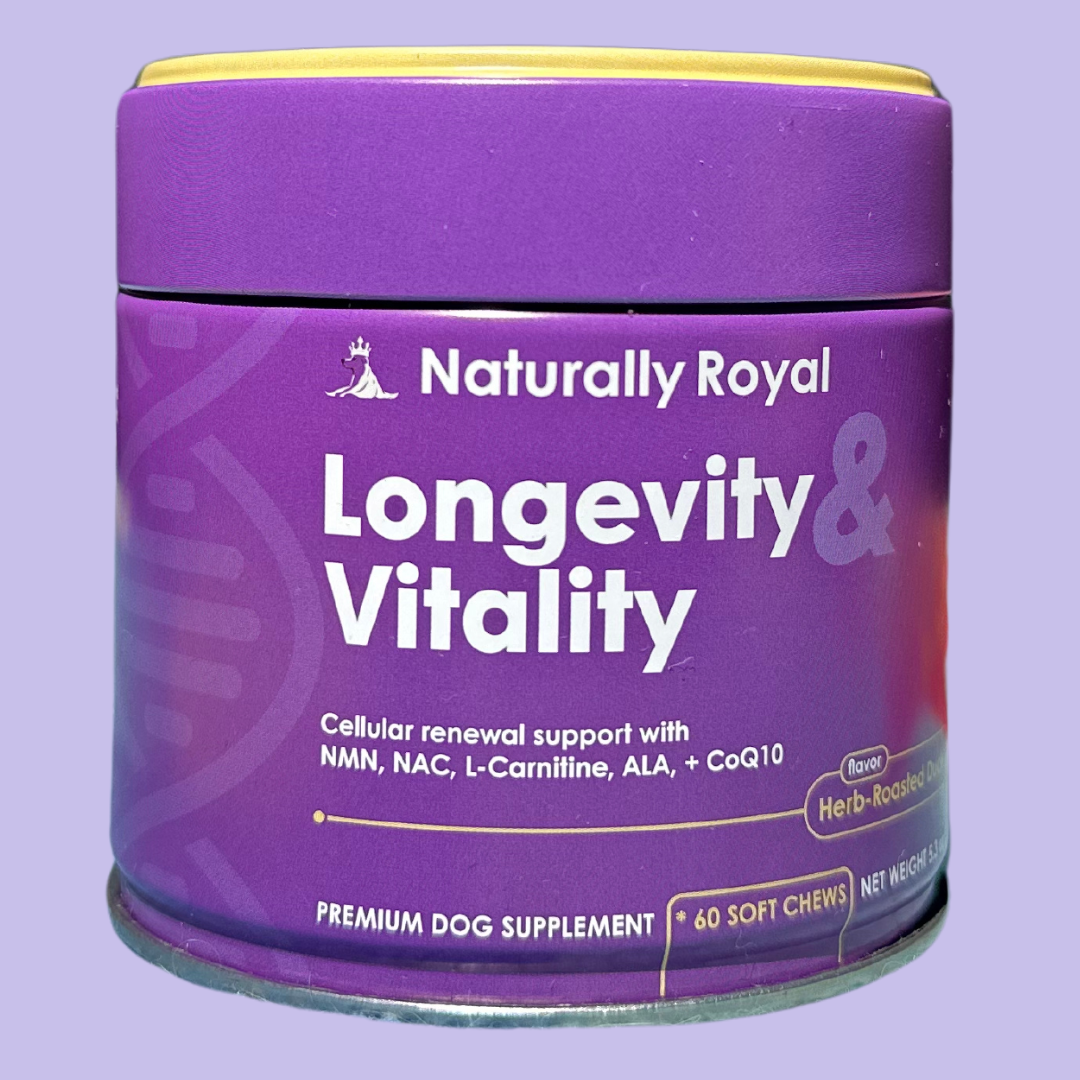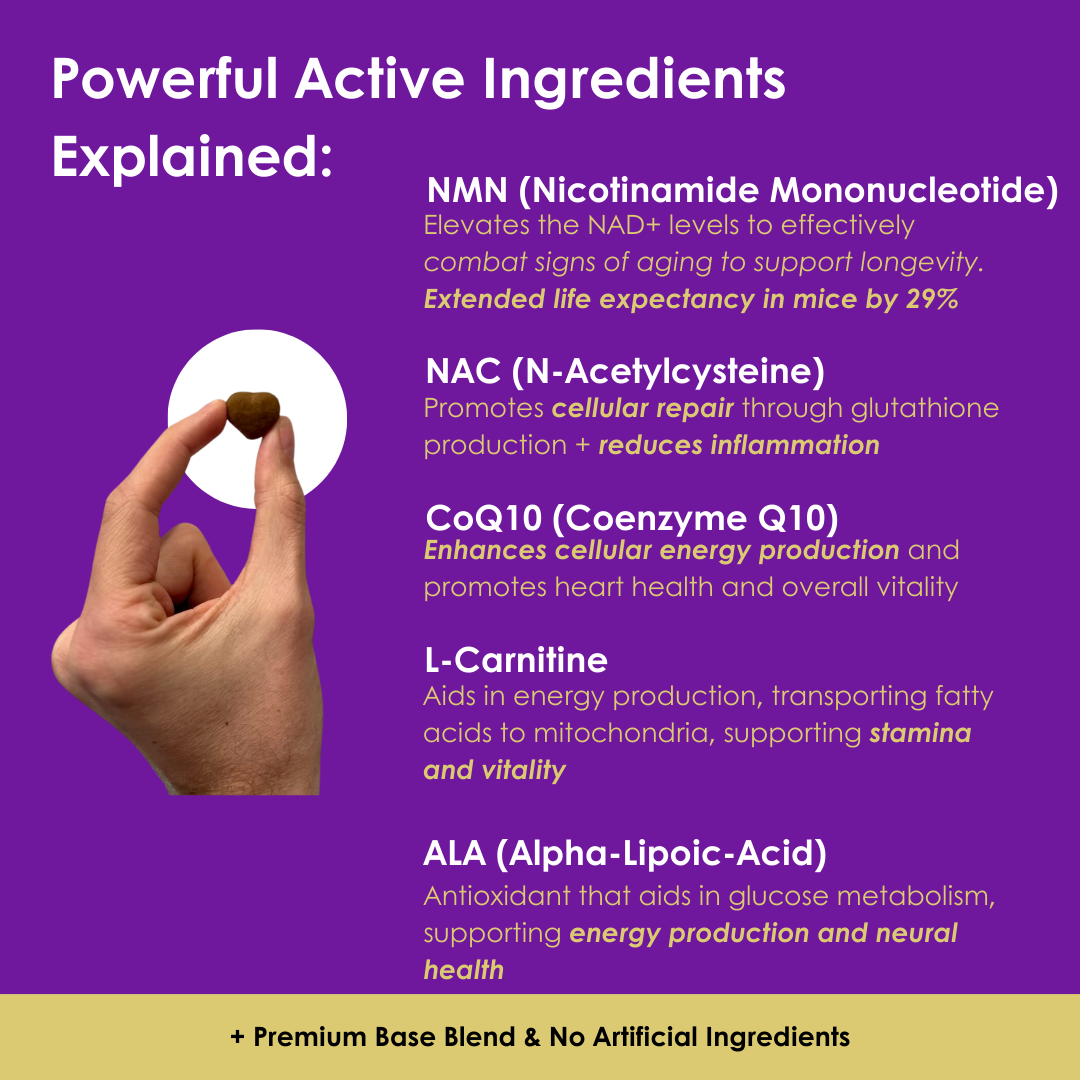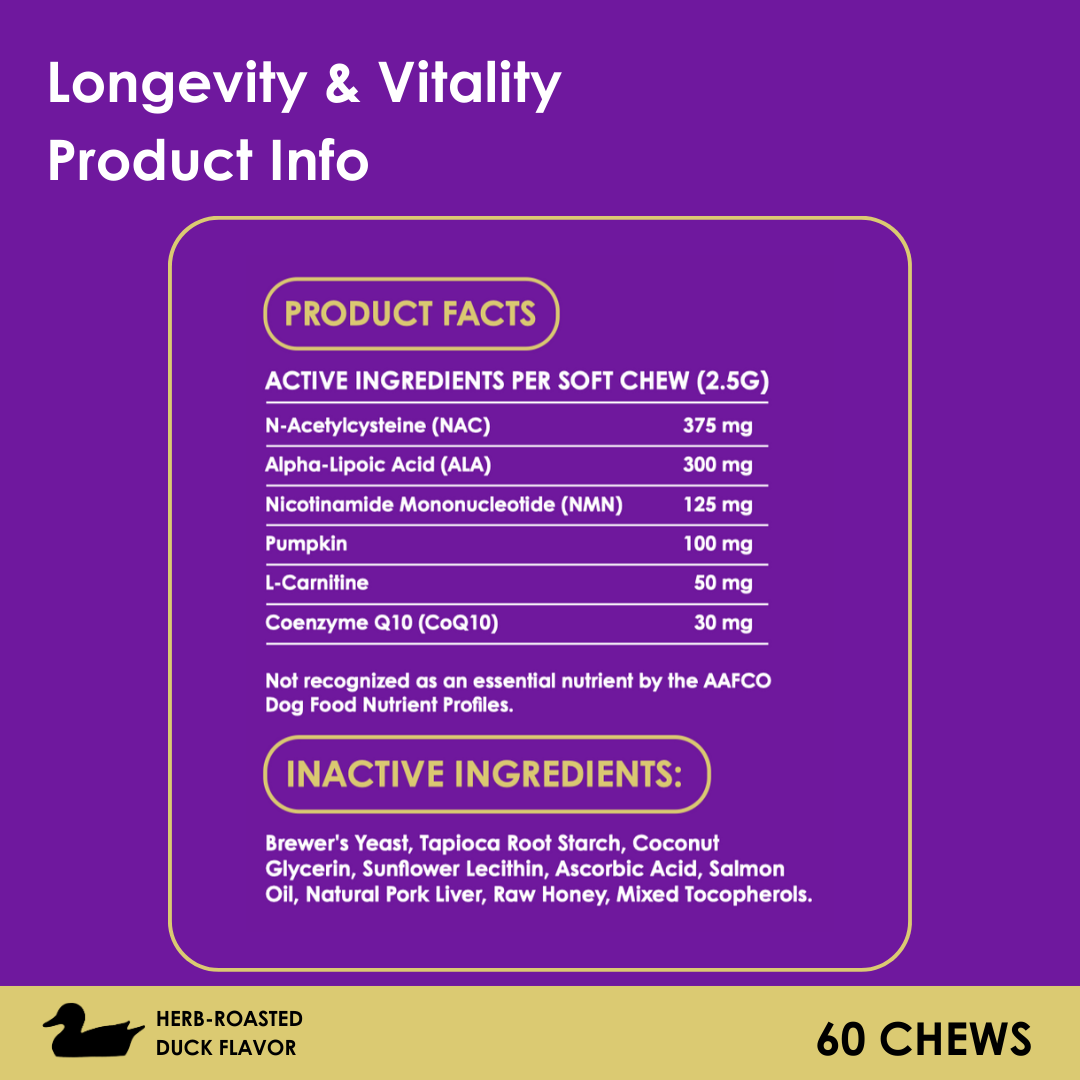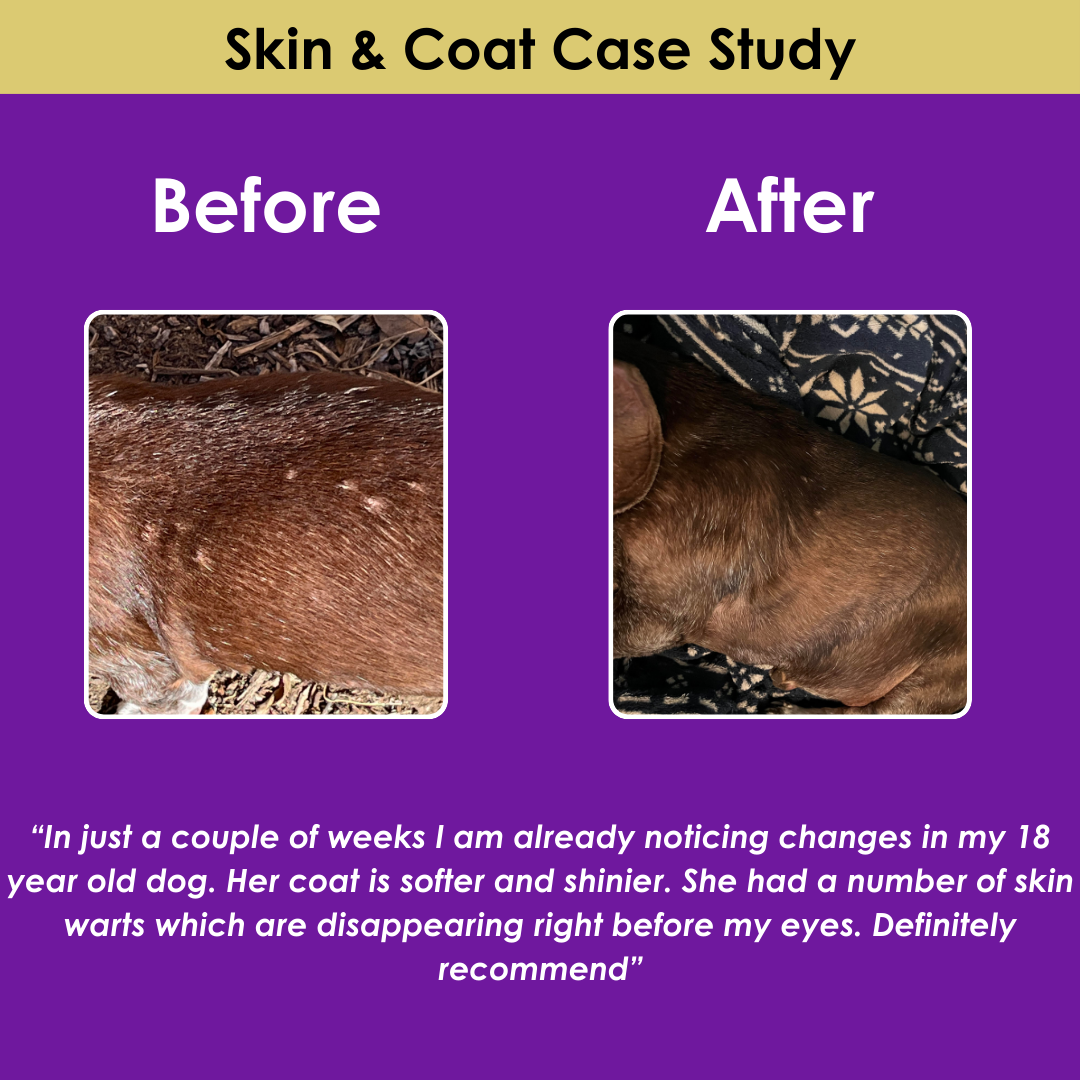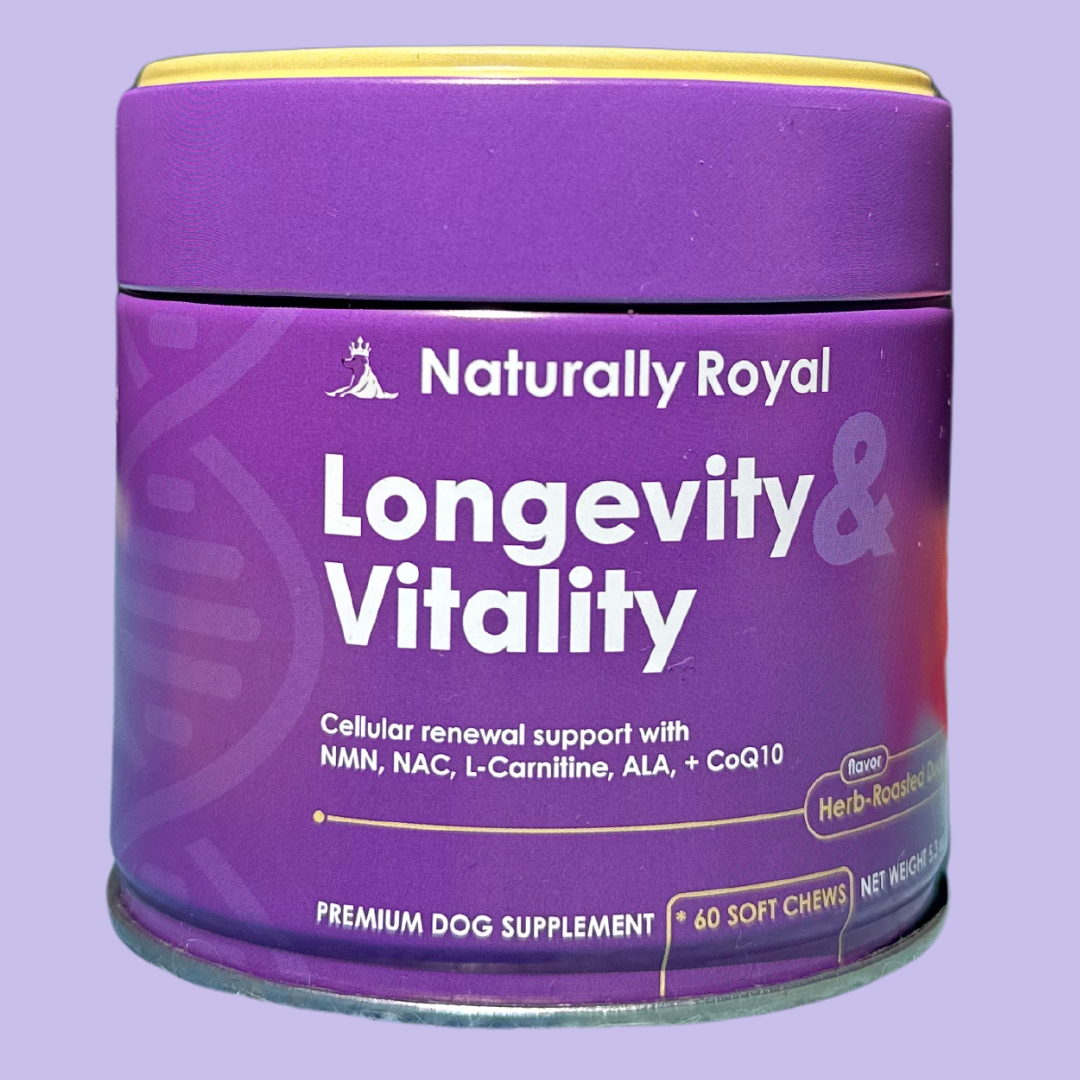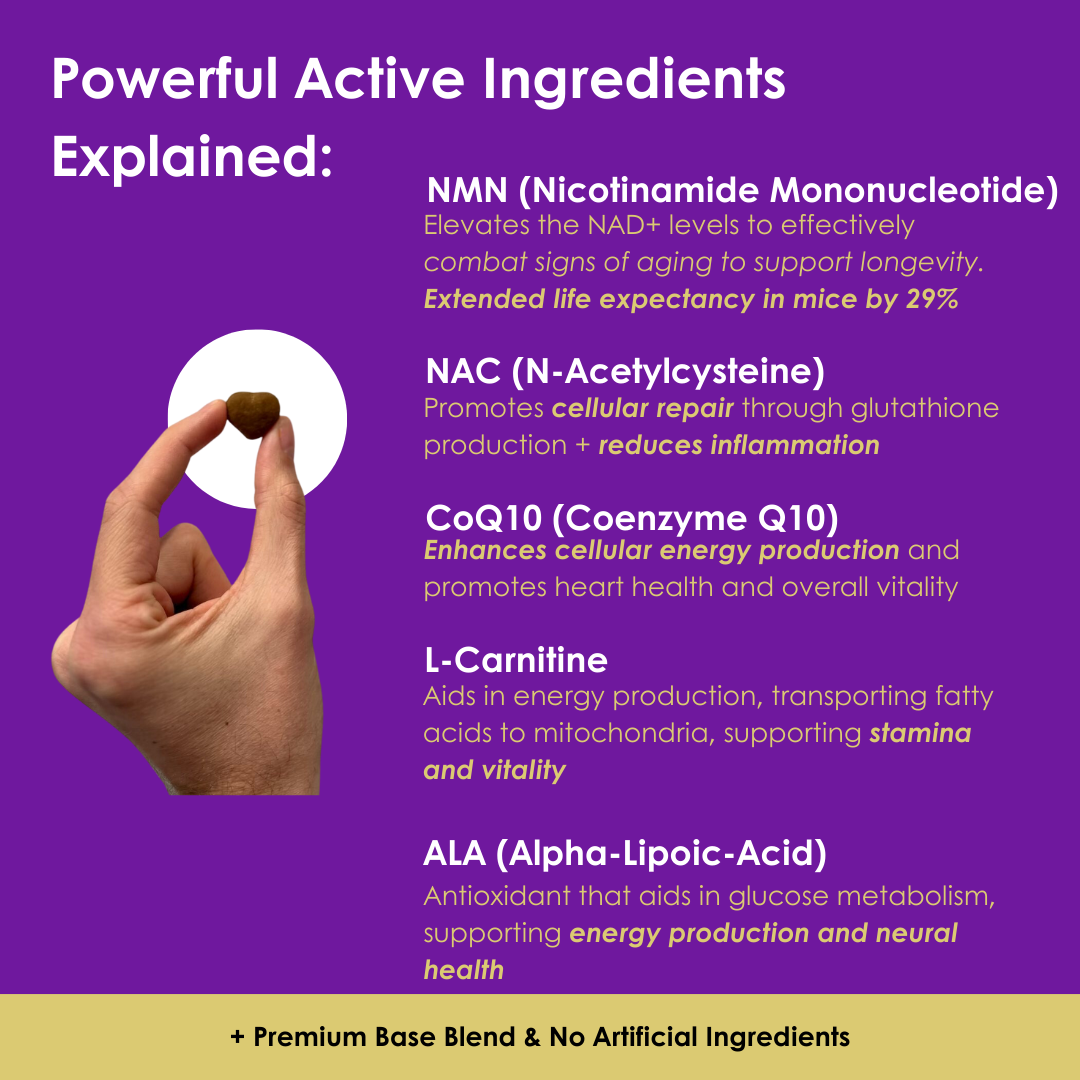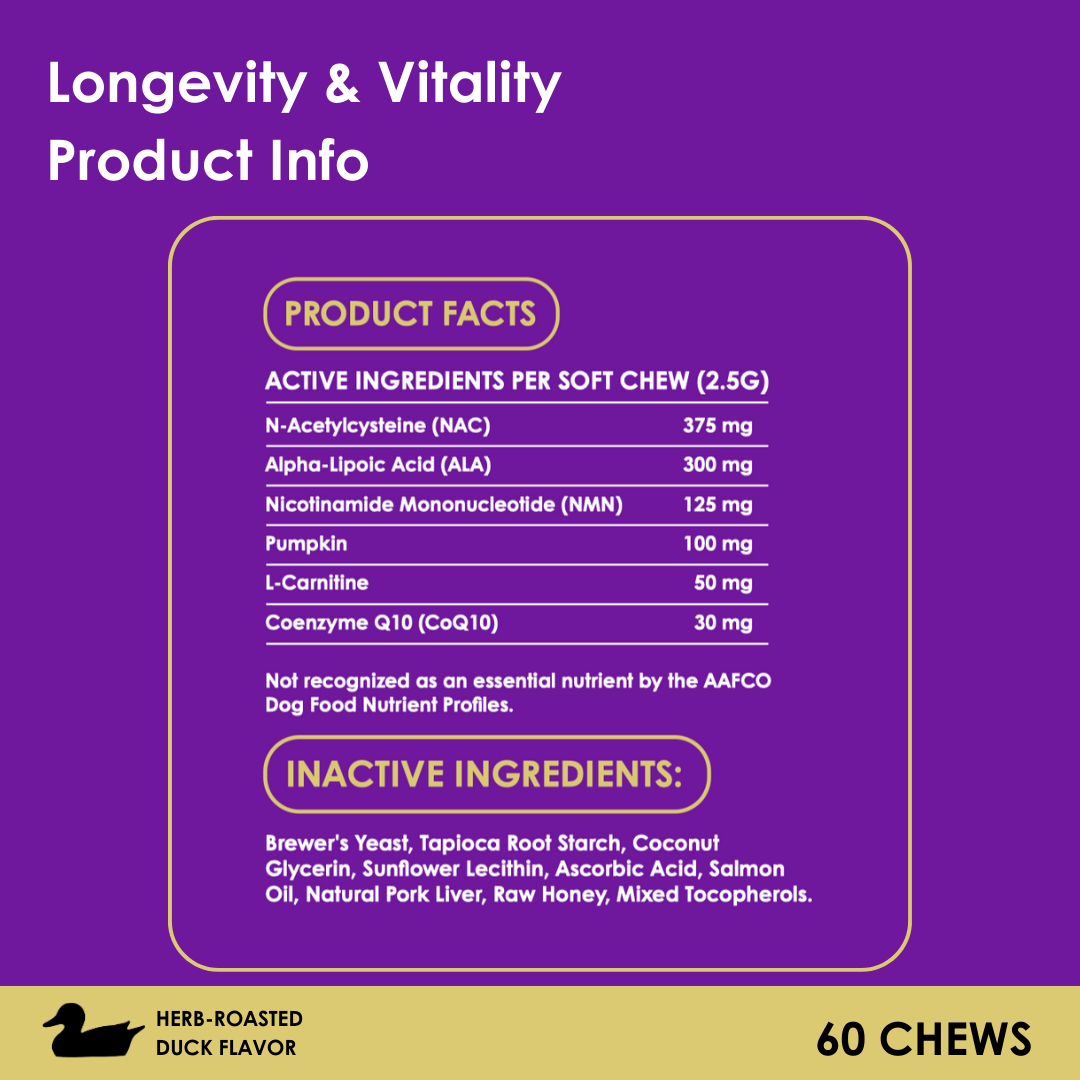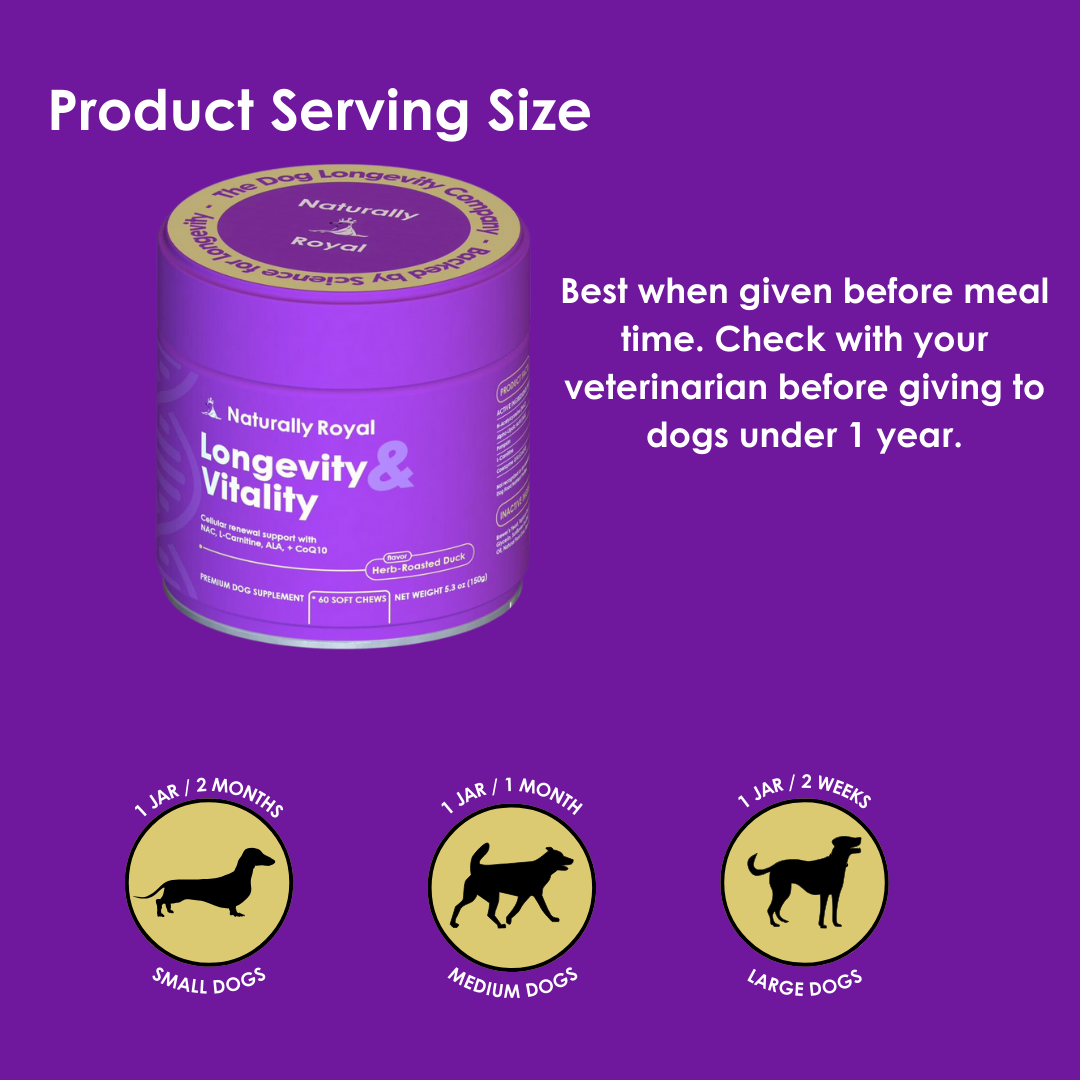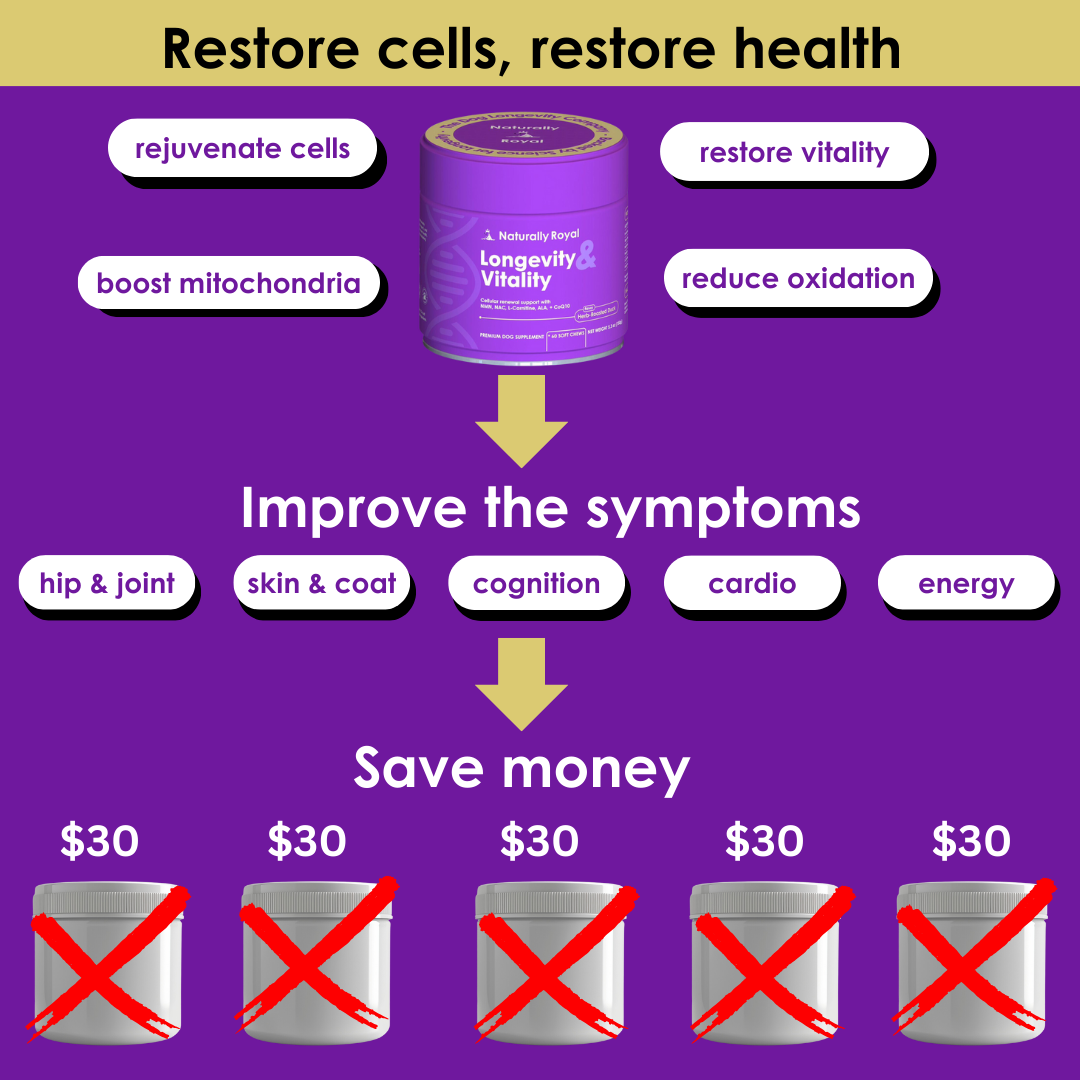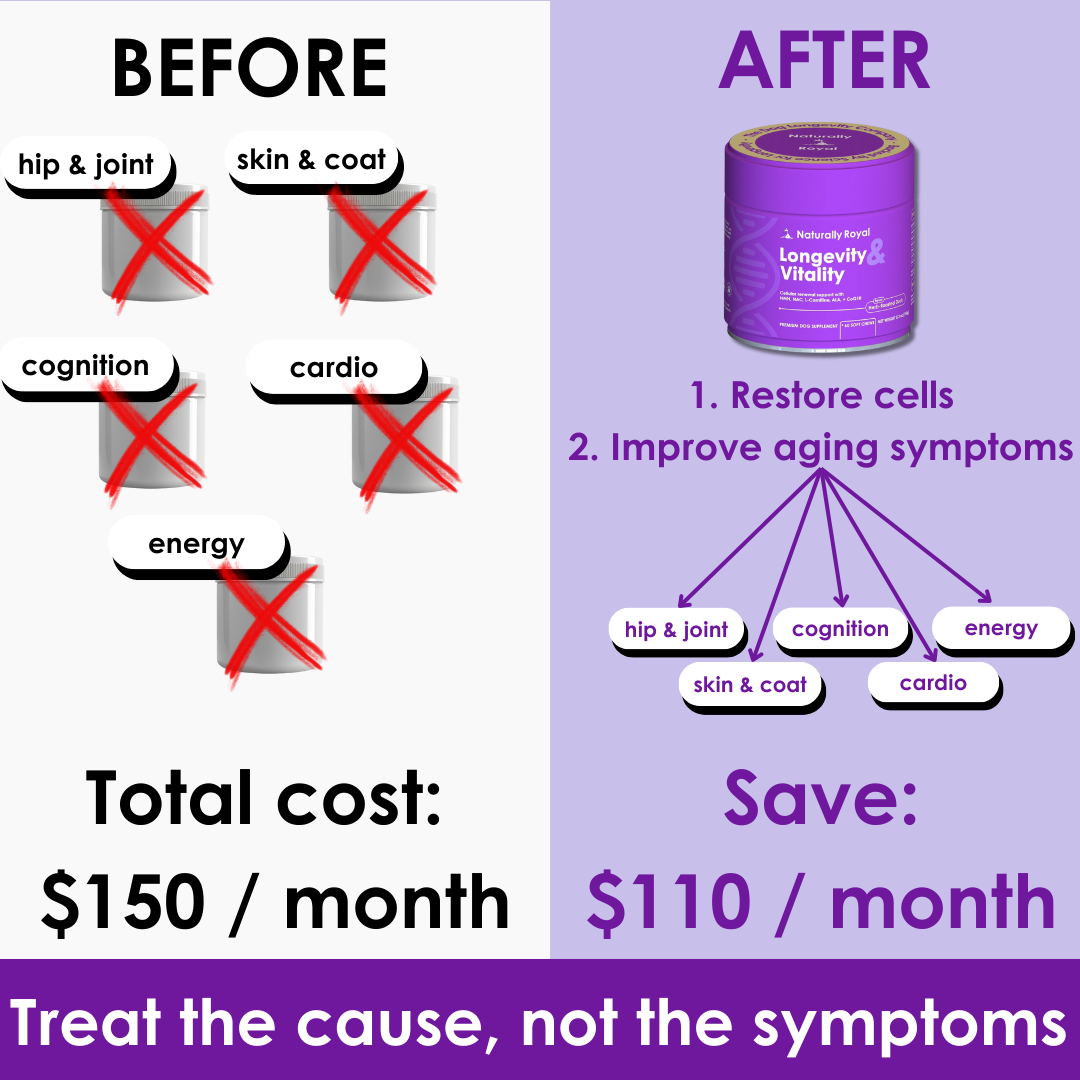Recognizing the First Signs of Aging in Dogs
Just like humans, dogs experience aging, which brings about physical and behavioral changes. Recognizing these early signs of aging can help you take proactive steps to support your dog's health and longevity. Let's go over the key signs of aging, which can give you an idea of if you should provide them with aging support:
Key Signs of Detectable Aging:
-
Decreased Activity and Mobility:
- Observation: Your dog may become less enthusiastic about playtime or exercise, showing signs of stiffness or reluctance to move, especially after resting.
- Impact on Longevity: Maintaining mobility is crucial for your dog's overall health. Regular, gentle exercise and joint supplements can help keep your dog active and reduce the risk of age-related joint issues.
-
Changes in Weight:
- Observation: Weight gain or loss can be an early sign of aging. Older dogs may gain weight due to reduced activity or lose weight due to muscle loss or underlying health issues.
- Impact on Longevity: Managing your dog's weight through a balanced diet and regular exercise can prevent obesity-related diseases and support a longer, healthier life.
-
Dental Issues:
- Observation: Look for signs of dental problems such as bad breath, yellowing teeth, swollen gums, or difficulty eating.
- Impact on Longevity: Good dental hygiene can prevent periodontal disease, which is linked to heart and kidney problems. Regular dental check-ups and cleaning are essential.
-
Behavioral Changes:
- Observation: Changes in behavior, such as increased anxiety, confusion, or altered sleeping patterns, can indicate cognitive decline or other health issues.
- Impact on Longevity: Mental stimulation through interactive toys, training, and a stable environment can help maintain cognitive function and enhance your dog's quality of life.
-
Changes in Vision and Hearing:
- Observation: Your dog may start to bump into objects, have difficulty finding toys, or not respond to calls or commands as they used to.
- Impact on Longevity: Regular veterinary check-ups can help detect vision or hearing loss early. Making adjustments at home, like keeping pathways clear and using visual or tactile signals, can help your dog adapt.
-
Skin and Coat Changes:
- Observation: Thinning fur, graying, dry skin, or the development of lumps and bumps are common signs of aging.
- Impact on Longevity: Regular grooming and veterinary check-ups can help manage skin conditions and detect potential health issues early.
-
Digestive Issues:
- Observation: Older dogs may experience digestive changes, such as more frequent vomiting, diarrhea, or constipation.
- Impact on Longevity: A diet tailored to your dog's age, size, and health needs can improve digestion and overall health. Consult your vet for dietary recommendations.
Conclusion:
Recognizing the first signs of aging in your dog allows you to take proactive measures to support their health and longevity. Regular veterinary visits, a balanced diet, appropriate exercise, mental stimulation, and good dental care are essential for maintaining your dog's quality of life as they age. By being attentive to these signs, you can help ensure your dog enjoys a happy, healthy life well into their senior years.


